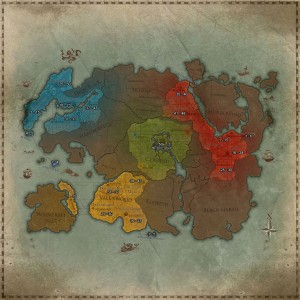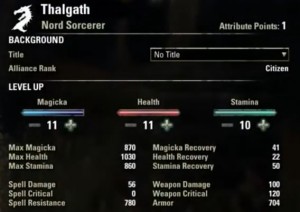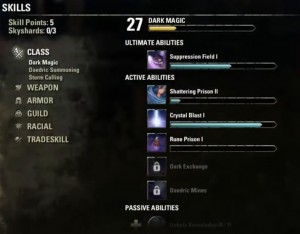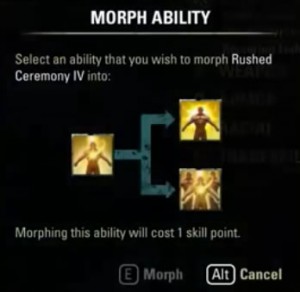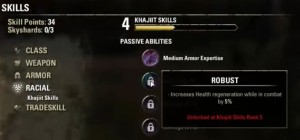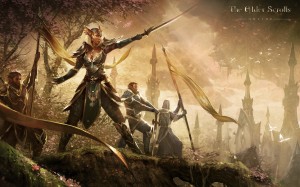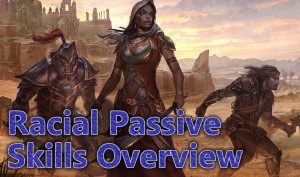 In The Elder Scrolls Online every race has its own skill line. Each of the 10 races has 4 different passive abilities: the first one is automatically unlocked and gives you a bonus on experience gained with a specific weapon or armor skill line (mostly useless), and in the other three abilities you can allocate up to three skill points.
In The Elder Scrolls Online every race has its own skill line. Each of the 10 races has 4 different passive abilities: the first one is automatically unlocked and gives you a bonus on experience gained with a specific weapon or armor skill line (mostly useless), and in the other three abilities you can allocate up to three skill points.
While racial bonuses in general don’t provide any overly substantial benefit to your class or build, those of you who want to maximize the effectiveness of your character will surely be interested to pick the right race to go with your class and build.
Below we’ll provide a list of all racial passive skills and give you a basic overview of them. If you want to easily compare racial passives and find out which race is the most optimal for your build keep on scrolling, or click one of the convenient links below to jump to a particular section!
- Comparison Table
- Daggerfall Covenant: Breton, Orc, Redguard
- Aldmeri Dominion: High Elf, Wood Elf, Khajiit
- Ebonheart Pact: Argonian, Dark Elf, Nord
- Imperial
Comparison Table
The table below should give you the necessary info at a glance. Do note that simply because a race is low rated for a particular playstyle it doesn’t mean you can’t play it! The table only provides a visual representation of which builds and roles particular racial bonuses are beneficial for. If you truly don’t care about squeezing every last bit of power on your character then just ignore it all and pick whatever race appeals to you, either by visuals or their background story.
In endgame some of these bonuses have very little impact, but some can be extremely beneficial as well. Enchants, traits, mundus stones and other ways to buff your character have a substantially larger impact, but racial passives can still make a difference for players looking to do harder endgame content such as Trials.
| Tank | Healer | Magicka DPS |
Stamina DPS |
|
| Breton | |
|
|
|
| Orc | |
|
|
|
| Redguard | |
|
|
|
| High Elf | |
|
|
|
| Wood Elf | |
|
|
|
| Khajiit | |
|
|
|
| Argonian | |
|
|
|
| Dark Elf | |
|
|
|
| Nord | |
|
|
|
| Imperial | |
|
|
|
Daggerfall Covenant
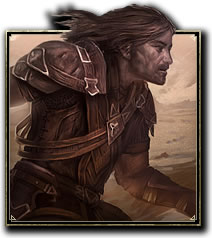 Breton
Breton
- Opportunist – increased experience gain with Light Armor skill line by 15% and Alliance Points gained by 1%
- Gift of Magnus – increases max magicka by 2000
- Spell Resistance – increases spell resistance by 2310 and Magicka Recovery by 100
- Magicka Mastery – reduces the magicka cost of spells by 7%
Bretons are clearly most suited as spellcasters. While bonus experience on Light Armor has practically no benefit, increased AP gain can be helpful if all you do is PvP. Spell resistances are equally helpful for any playstyle or role, while magicka recovery will clearly mostly help healers and mages.
The main reason why I consider Bretons to be the best healers is their Magicka Mastery passive, reducing the cost of all magicka-based abilities by a whooping 7%. Magicka cost reduction is very difficult to get otherwise, and can help with managing your magicka substantially.
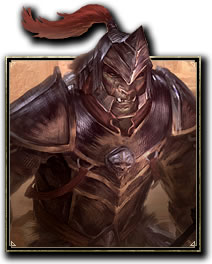 Orc
Orc
- Craftsman – increases XP gain with Heavy Armor skill line by 15% and crafting inspiration gain by 10%.
- Brawny – increases max stamina by 2000.
- Unflinching Rage – grants 1000 max health and heals you for up to 600 whenever you deal damage with your weapon (4 second cooldown).
- Swift Warrior – Increases weapon damage by 258, reduces sprint cost by 12% and increase sprint speed by 10%
Crafting inspiration can be beneficial if you’re creating a crafting alt, but is otherwise not necessary. Max health and stamina makes Orcs ideal for sturdy melee characters, and very beneficial weapon damage solidifies them for stamina-based builds.
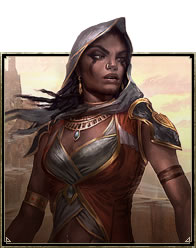 Redguard
Redguard
- Shield Affinity – Increases experience gained with the One-Handed and Shield skill line by 15%, and increases duration of eaten food by 15 minutes.
- Martial Training – Reduces the cost of weapon abilities by 8%.
- Conditioning – Increases maximum stamina by 2000.
- Adrenaline Rush – Restores 950 Stamina when you damage an enemy with a melee attack once every 5 seconds
Redguard’s reduced weapon ability costs, increased stamina and stamina restoration make them ideal for stamina-based DPS but also tanks. Tanks do need quite a lot of stamina to be able to consistently block and interrupt during combat, and Redguards are one of the races which have the most impactful benefits.
The Aldmeri Dominion
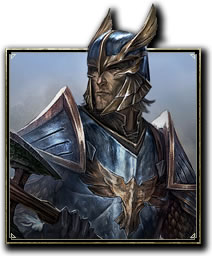 High Elf
High Elf
- Destruction Talent – Increases XP gain with Destruction Staff skill line by 15% and character experience gained by 1%.
- Spell Recharge – Reduces damage taken by 5% while casting or channeling an ability, and restores 645 stamina or magicka after activating a class ability (once every 6 seconds).
- Syrabane’s Boon – Increases max magicka by 2000.
- Elemental Talent – Increases Spell Damage by 258.
High Elves (Altmer) are clearly best suited for the Sorcerer class, or other magicka-based damage dealing builds. Destroying your enemies with ranged spells becomes easier with their huge magicka bonuses, and the last passive is clearly only useful for magicka builds.
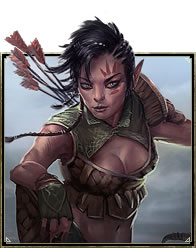 Wood Elf
Wood Elf
- Acrobat – Increases experience gain with the Bow skill line by 15%, and decreases fall damage taken by 10%.
- Y’ffre’s Endurance – Increases stamina recovery by 258.
- Resist Affliction – increases poison resistance by 2310 and gain immunity to poisoned effect. Also increases maximum stamina by 2000.
- Hunter’s Eye – Increases detection radius in Stealth by 3m, and gain 10% movement speed and 1500 bonus to Physical and Spell Penetration for 6 seconds after using roll dodge.
Poison resistance is not as impactful as you might think, so the only tangible benefit from Resist Affliction is the larger stamina pool bonus. 258 stamina recovery is huge for stamina-based builds, but is the entire Wood Elf (Bosmer) race’s potential is negated with Hunter’s Eye useless bonuses.
For melee DPS or bow builds, there are races with more impactful bonuses.
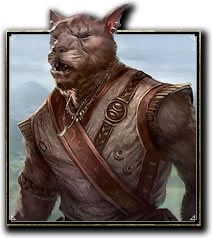 Khajiit
Khajiit
- Medium Armor Expertise – Increases experience gained with Medium Armor skill line by 15%, and increases chance to Pickpocket by 5%.
- Robustness – Increases health recovery by 100, and stamina and magicka recovery by 85.
- Lunar Blessings – Increases max health, magicka and stamina by 825.
- Carnage – Increases critical hit damage and healing by 10%, and reduces detection radius in stealth by 3m.
Khajiit are clearly intended to be sneaky thieves, however in my opinion their passives give a little bit of everything, making them sub-par for stamina builds. Tanks might benefit most from increases to all three main stats, but there are other races better suited for tanks or stamina DPS builds.
The Ebonheart Pact
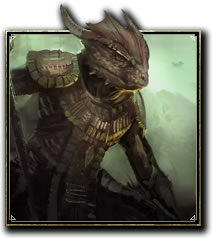 Argonian
Argonian
- Restoration Expertise – Increases XP gain with Restoration skill line by 15%, and swimming speed by 50%.
- Resourceful – Increases max magicka by 1000, and restores 4000 Health, Magicka and Stamina whenever you drink a potion.
- Argonian’s Resistance – Gain immunity to diseased status effect, increases Poison and Disease resistances by 2310, and increased max health by 1000.
- Life Mender – Increases healing done by 6%.
Argonian passives were clearly designed with healers in mind, and they excel at this role. However, there are other races which can be equally good for healers, and have more varied bonuses in case you want to switch it up a little. I would only recommend Argonian healers if you intend to do endgame raids.
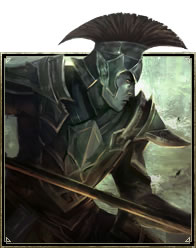 Dark Elf
Dark Elf
- Ambidexterity – increases XP gain with Dual Wield skill line by 15%, and damage taken from environmental lava by 50%.
- Dynamic – Increases maximum magicka and stamina by 1875.
- Resist Flame – Increases fire resistance by 2310 and grants immunity to burning status effect. Also increases maximum health by 600.
- Ruination – Increases your Weapon and Spell damage by 258.
Dark Elves (Dunmer) make for excellent damage dealers with both stamina and magicka builds. Fire resistance bonuses can be helpful for frequent dungeon-dwellers but especially Vampires, while the minor health bonus is good for everyone. A decent amount of both magicka and stamina provided by Dynamic passive is excellent regardless of your build choice.
Ruination passive has both Weapon and Spell damage bonuses, solidifying Dunmer race as a clear-cut damage dealer.
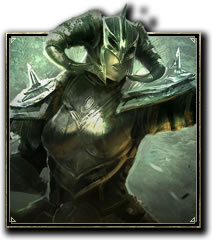 Nord
Nord
- Reveler – Increases experience gain with Two-Handed Weapon skill line 15% faster, and duration of any consumed drink by 15%.
- Stalwart – Increases max stamina by 1500, and you gain 5 Ultimate each time you take damage (once every 10 seconds).
- Resist Frost – Increases cold resistance by 2310, gain immunity to the Chilled status effect, and increases maximum health by 1000.
- Rugged – Increases your Physical and Spell resistances by 3960.
Nords are clearly aimed for tanking builds, and they certainly excel at that. Increased health, stamina and resistances are all very useful stats for a fully fledged tank, and Nords are definitely one of the best choices for that role.
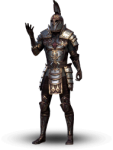 Imperial
Imperial
- Diplomat – Increases experience gained with One-handed and Shield skill line by 15%, and gold gained by 1%.
- Tough – Increases max health by 2000.
- Imperial Mettle – Increases max stamina by 2000.
- Red Diamond – Melee attacks restore 333 health, magicka and stamina once every 5 seconds. Also reduces cost of all abilities by 3%.
The Imperial race is available if you pre-ordered ESO or purchased the Imperial Pack in the Crown Store, and they passives are very strong for tanks and melee DPS builds. The increased max health and stamina is very useful for both aforementioned builds, as is the resource restore on attacks.
Once again, the first passive bonus for every race (increased experience with skill line) is automatically unlocked at level 1 and you can’t allocate any additional points into it. It’s also the least impactful bonus, as you will eventually level up all weapon and armor skills anyway.
The other 3 passive bonuses each have 3 ranks/levels. The passives can’t be immediately unlocked, but will eventually become unlockable as you level up and gain more experience in your racial skill line. First unlockable passive ability is available when your race skill line is Rank 5 (about the time your character is level 5), the second is available at rank 10 and third at rank 25.
You can further upgrade a particular passive to level 2 and 3 for every 10 ranks in your racial skill line. Note that all the bonuses mentioned above are for max rank passives.
We do hope the comparison of racial bonuses was useful and will help make your race decision easier. If you have any comments, questions or suggestions be sure to voice them below!



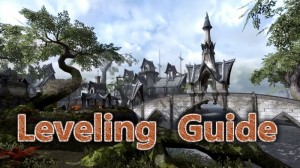
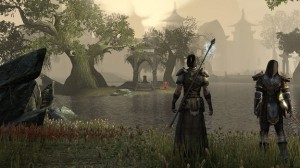
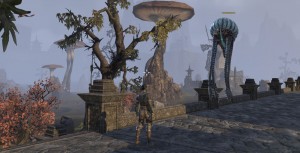
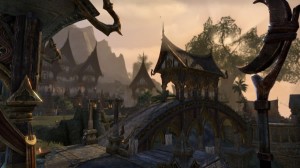
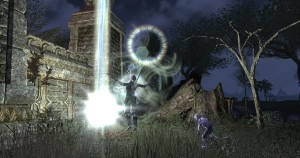
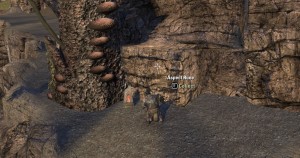
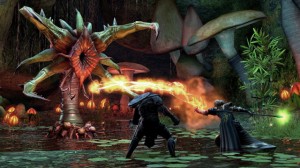
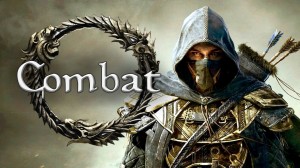
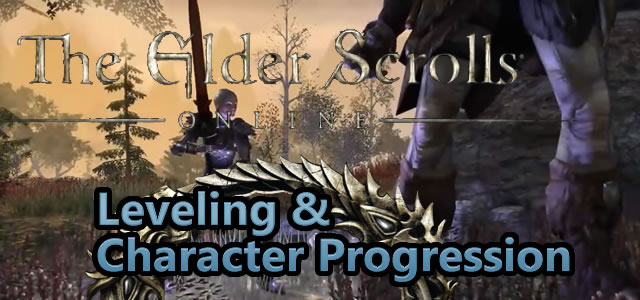 Elder Scrolls fans are already used to the open-ended progression system of their characters from Oblivion and Skyrim, and The Elder Scrolls Online didn’t change too much in that regard. TESO allows you to pick from a multitude of choices to build your character exactly how you want. The number of skill choices is vast and players can master a variety of skills and talents, and given enough time you can master nearly all skills.
Elder Scrolls fans are already used to the open-ended progression system of their characters from Oblivion and Skyrim, and The Elder Scrolls Online didn’t change too much in that regard. TESO allows you to pick from a multitude of choices to build your character exactly how you want. The number of skill choices is vast and players can master a variety of skills and talents, and given enough time you can master nearly all skills.